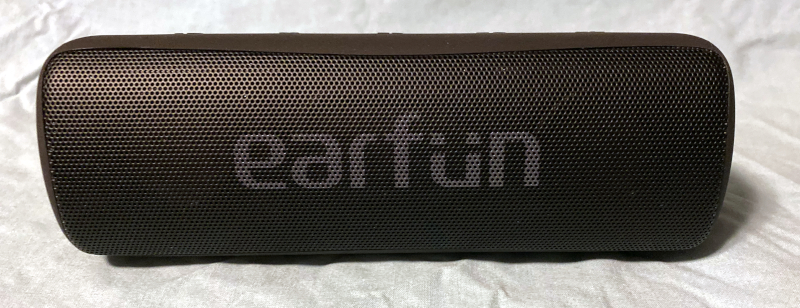
REVIEW – I have been eyeing my younger son’s wireless speaker for a while now, so when the opportunity to review the EarFun Go SP100 speaker came up, I jumped on the chance. Let’s see how it performs under some typical conditions.
What is it?
The EarFun Go SP100 is a weather resistant Bluetooth speaker with an integral rechargeable battery. Unlike earlier generations of Bluetooth speakers at this price-point, the SP100 support the use of two units for a true stereo experience.
What’s in the box?
The SP100 arrived in a full-color box which highlights the speaker’s specifications.

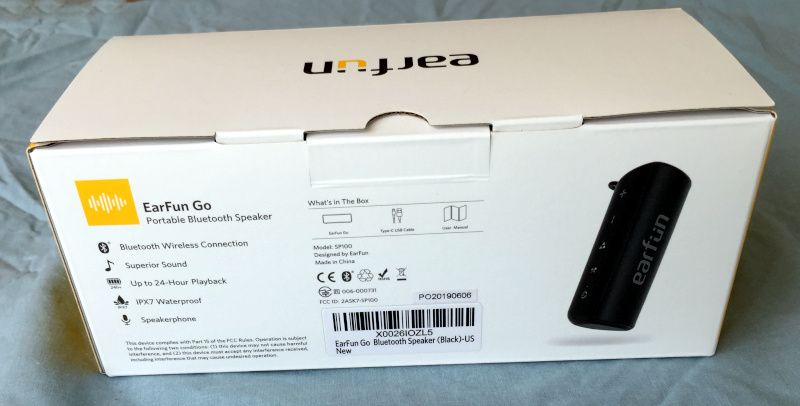
Inside the box the speaker is wrapped in a electrostatic static insulating pouch and suspended in two blow-molded end caps. The obligatory reference materials including warranty card and instruction booklet are on top of the speaker. A USB charging cable (USB-A to USB-C) is also included in the box.

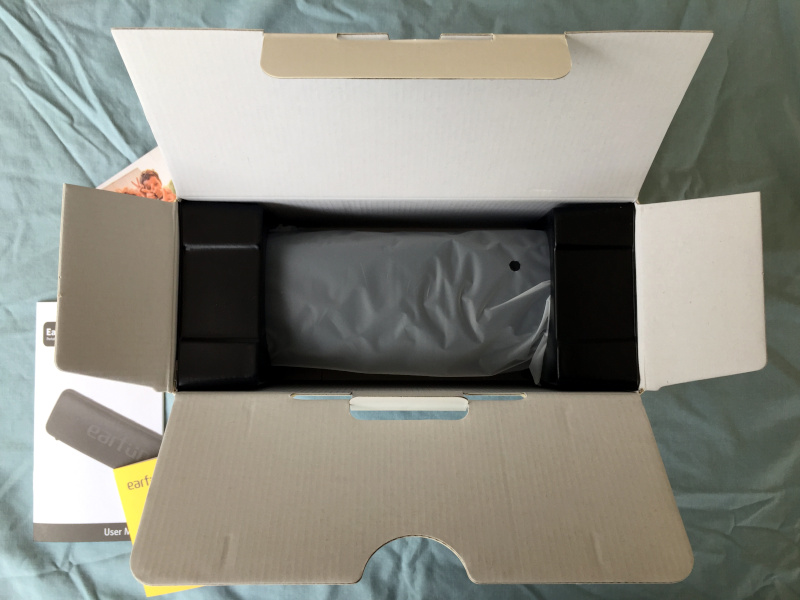
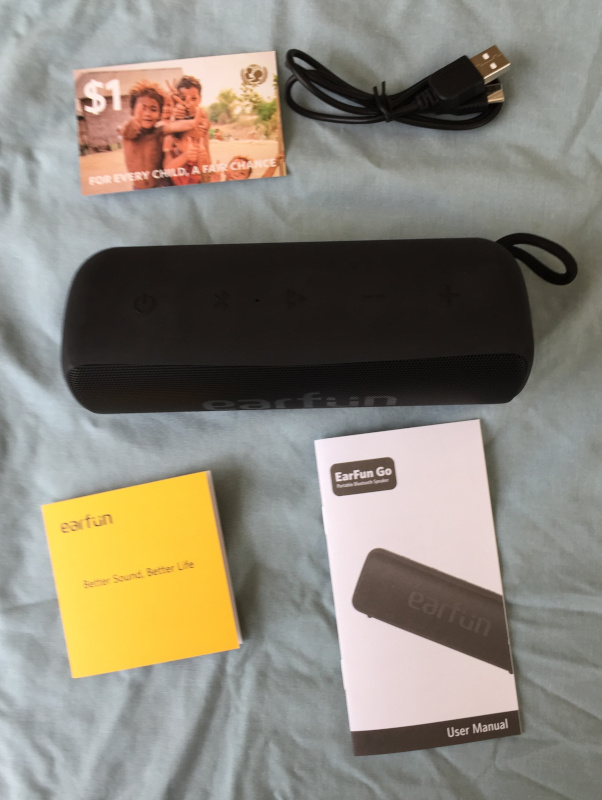
Hardware specs
The SP100 features an IPX7 case (no specified rating for dust / particulates, 1 meter submersion for less than or equal to 30 minutes).
The unit is 58 x 171 x 62 mm and weights 430 grams.
Sound comes from 2 40 mm 6 watt speakers and connections are via a 1/16″ stereo socket or via Bluetooth V 5.0. The Bluetooth chip supports A2DP, AVRCP, HFP, and HSP profiles. The SP100 features a 7.4 V 2200 mAh battery which is charged via a USB-C port on the back of the unit. Both the stereo socket and the charging port are protected by a water-resistant cover.

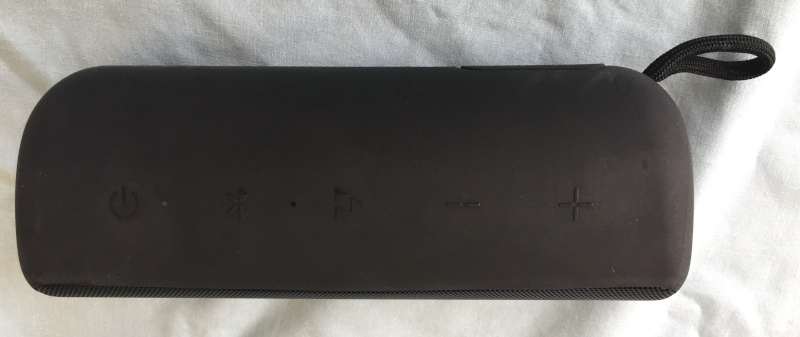
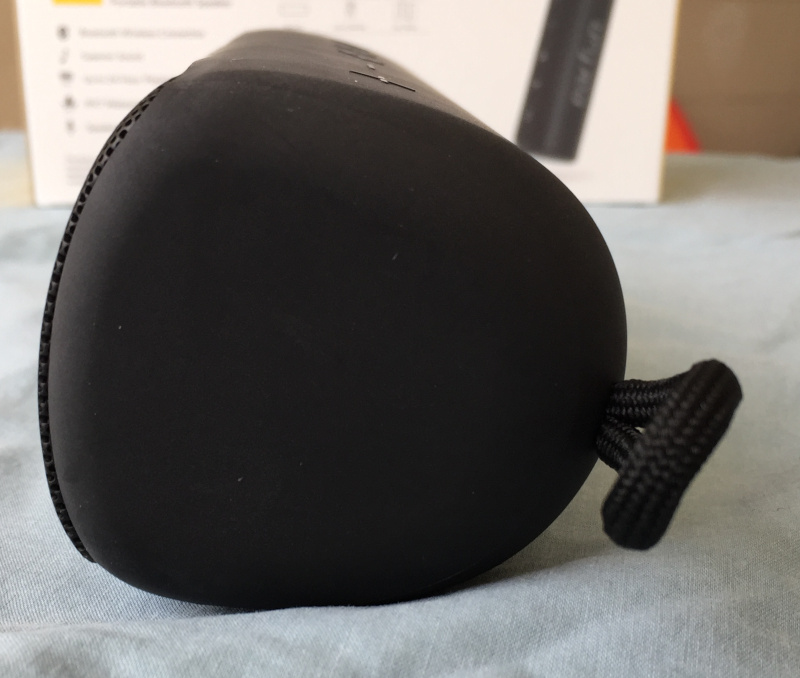
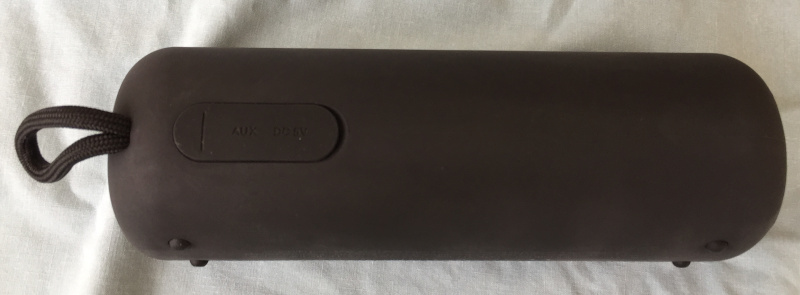
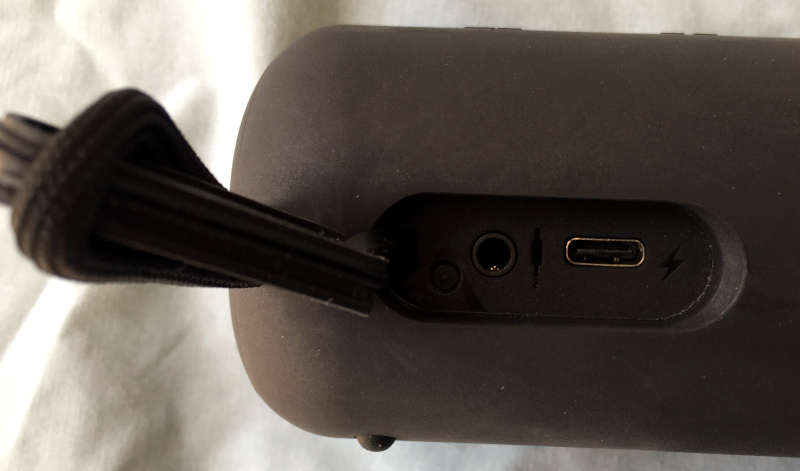
Design and features
User Controls
The EarFun Go SP100 has five buttons across the top of the speaker. These are, from left-to-right, power, Bluetooth, multi-function, volume down, and volume up. As one might expect, the power button turns the speaker on and off. The Bluetooth button is used to initiate single or dual speaker pairing (based on how long the button is pressed), and the multi-function button is used to control compatible paired devices (see more below). The volume buttons behave in an intuitive manner.
The multi-function button is used to control play/pause and track skipping when playing music and picking up / hanging up, call decline and call muting when paired with a mobile phone using the headset profile.
Setup
Setting up the EarFun Go SP100 is simply a matter of charging the battery using the included cable and pairing the speaker with your favorite device. I was able to successfully pair with multiple different iDevices, two different laptops, and one of my sons’ Android phone. I did not have a second SP100 to test the ability to link one device as right-channel-only and one as left-channel-only.
The only drawback with the Bluetooth setup on the SP100 is that the speaker will only connect to one device at a time, and preferentially picks the last device to which it connected. This means that you will either have to manually disconnect the SP100 or disable Bluetooth on the last device if that isn’t the one you do want to use. This is a common problem among lower-price devices, so it isn’t really a big ding against the SP100.
Performance
I tested the SP100 in several settings and it came through with flying colors. I tested the following scenarios:
- playing music in a quiet room
- playing music in a loud room
- playing music outdoors in a quiet setting
- playing music outdoors in a loud setting
- playing music in a workshop
- receiving telephone calls in a quiet setting
- receiving telephone calls in a loud outdoor area
I compared the speaker to the sound quality of my Sennheiser HD-1 Bluetooth headphones being driven by my laptop with the Soundworks True-Fi app running to create a more neutral sound, without the age compensation active. As with most consumer-oriented speakers and headphone on the market today, the SP100 is tuned to be bass heavy, but this is not particularly noticeable when listening to most pop / rock / club remix music. I did notice the bass-heavy tuning while listening to classical music, although the enhanced bass did improve certain sections of The 1812 Overture.
The indoor testing was performed in my home office. The outdoor tests were conducted in my garage workshop with the outside garage door open while working on various projects and a day-long cleaning / reorganization session. At various times, neighbors were outside mowing their lawns, running leaf blowers, etc. (usual weekend noises) and for a few hours, the distant sounds of roofer working on replacing roof shingles added to the atmosphere. I also took the SP100 on several day activities (manning the grill for a middle school field day, community improvement projects, etc.) and a weekend camping trip.
The bass-heavy tuning was most noticeable while playing music in quieter settings, especially the quiet room tests. When I left the speaker resting on my desk, I could feel a definite vibration from the bass driver. The tuning was much less noticeable in loud or outdoor settings where competing sounds mellowed the bass. I did not notice the bass amplification during phone calls. I noticed that after 20 – 30 minutes, my brain adapted to the heavier bass and it was no longer a distraction.
The SP100 claims to support up to a 100 foot range when paired with a compatible Bluetooth 5 device and 24 hours of playback. I was unable to test the 100 foot range because I didn’t have another Bluetooth 5 device, but this speaker was still delivering non-degraded sound at a greater distance than my expensive headphones or our other wireless speakers would. I pushed the SP100 on battery life during the camping trip because I forgot to charge it before we left and had forgotten to bring along a USB-C cable. I calculated the when the SP100 stopped playing that it had been active for between 18 and 22 hours including use during the previous weekend in the shop and some miscellaneous around-the-house use during the week.
Testing environmental rating
To test the environmental rating for splash resistance and shallow immersion, I tied a tether to the speaker and threw it in my pool (it is still pool weather in Florida) while playing music over a Bluetooth connection to my phone.
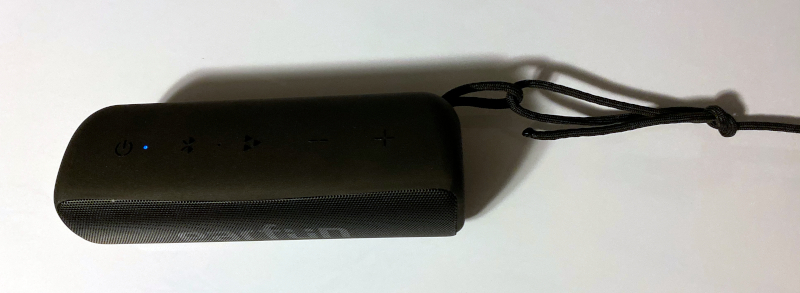
Much to my disappointment and pleasure, the speaker floated. As I wasn’t dressed for full immersion, I simply let the speaker float in the pool for 10 minutes, rather than holding it underwater for 10 minutes at the 1 meter depth of the shallow end of my pool. It is a better design for the speaker to float rather than sink like a rock.
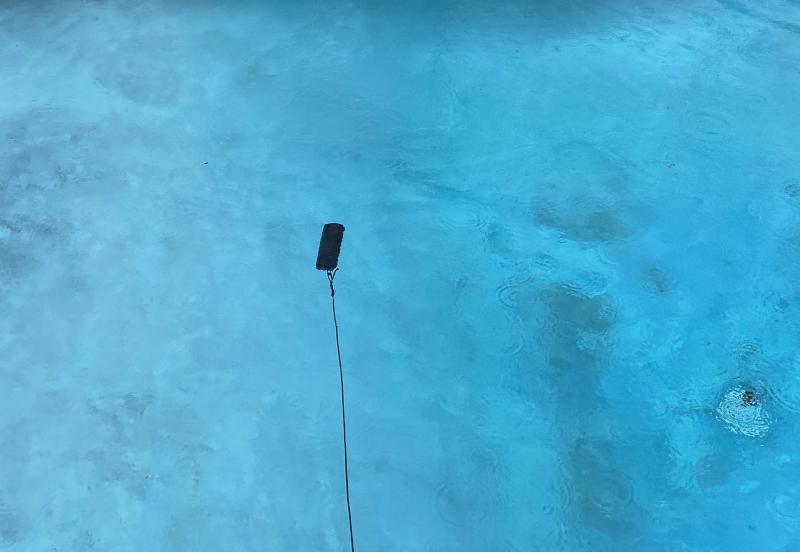
After its 10 minute soak, I hauled the speaker back in (it was still playing music) and dried off the surface. When I popped open the hatch covering the charging port and stereo plug, there was no moisture inside the bay.
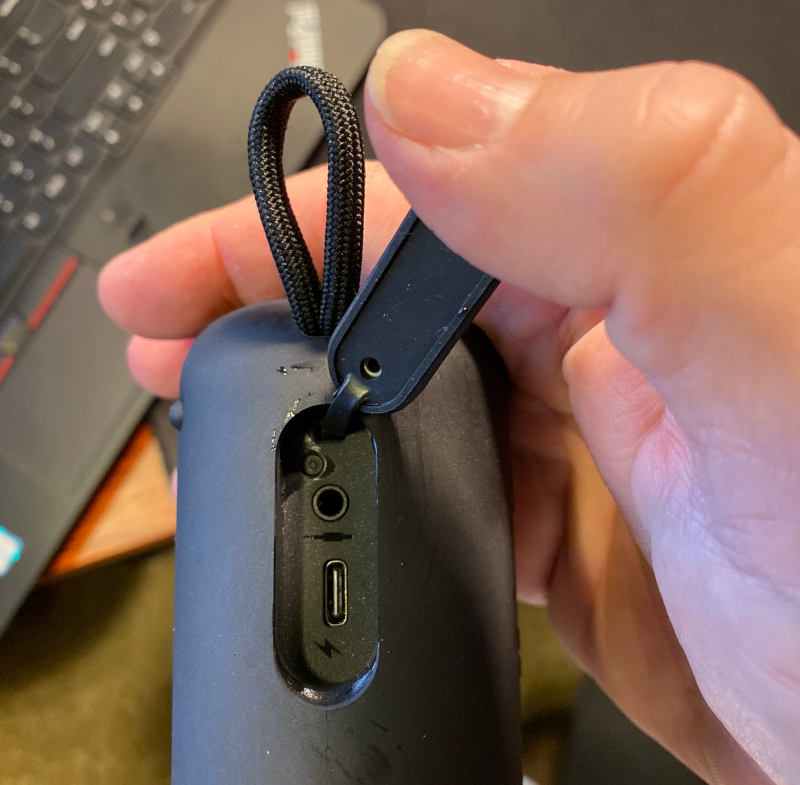
What I like
- Good sound volume
- Stays connected over a long distance
- Good battery life
- Good value
What needs to be improved
- Bass-heavy tuning could be dial back a bit
- It would be nice for the Go SP100 to be offered in a two-pack for those who want the full stereo experience
Final thoughts
The EarFun Go SP100 speaker performed as well as more expensive Bluetooth speakers that we own and better than some Bluetooth speaker adapters that I’ve tested. The SP100 is a great value, and while not an audiophile speaker, it produces a reasonable listening experience both ideal and non-ideal listening settings.
Price: $39.99
Where to buy: Amazon
Source: The sample of this product was provided by EarFun.


